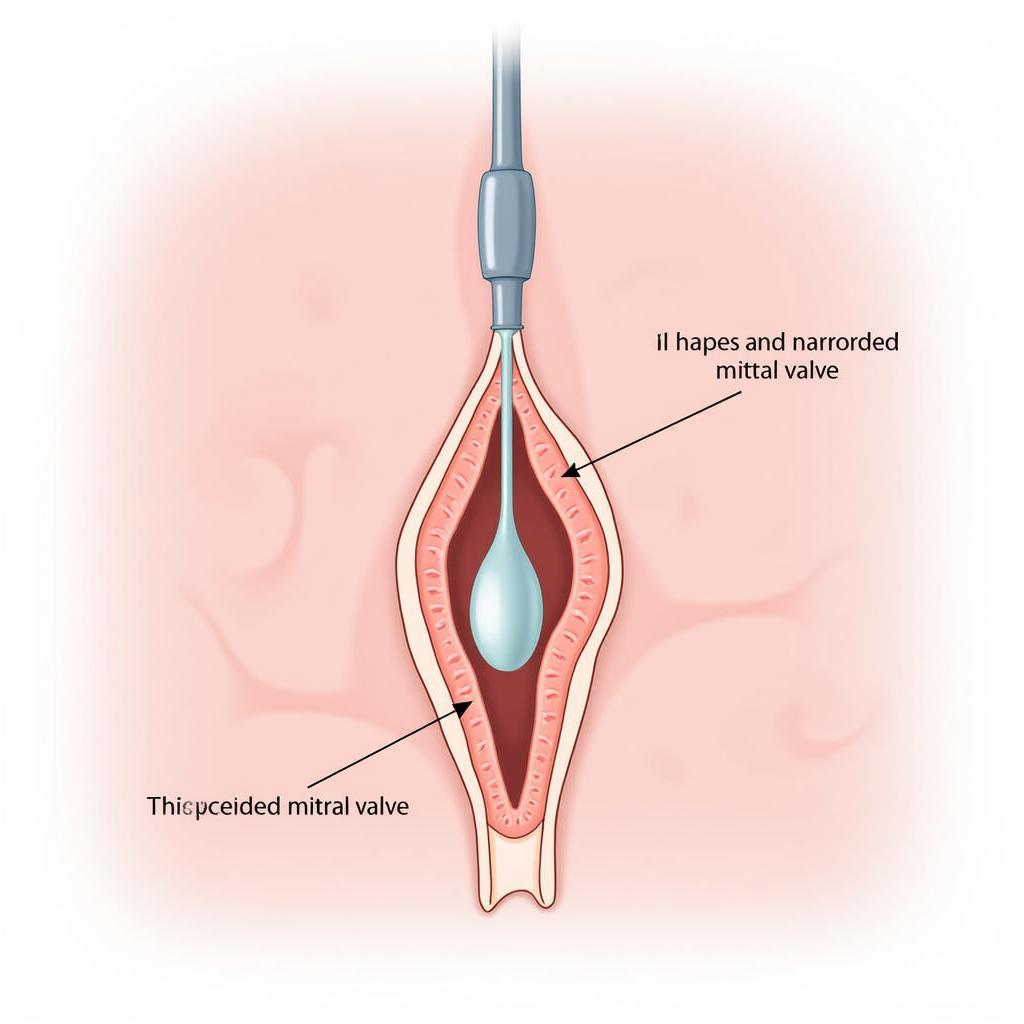Mitral stenosis is a valvular heart disease that narrows the mitral valve opening, obstructing blood flow from the left atrium to the left ventricle. The American Society of Echocardiography (ASE) provides comprehensive guidelines for diagnosing and managing mitral stenosis using echocardiography, a key tool for assessing valve structure and function.
ASE Guidelines and the Role of Echocardiography
Echocardiography plays a central role in the ASE guidelines for mitral stenosis. These guidelines emphasize a multimodality approach, integrating echocardiographic findings with clinical presentation and other diagnostic tests. Echocardiography allows cardiologists to:
- Assess mitral valve anatomy: Visualize the mitral valve leaflets, subvalvular apparatus, and any associated abnormalities.
- Quantify stenosis severity: Measure the mitral valve area (MVA) using various echocardiographic methods like planimetry and pressure half-time.
- Evaluate hemodynamic impact: Determine the pressure gradient across the mitral valve and assess the size and function of the left atrium and ventricle.
- Guide treatment decisions: Determine the need for interventions like percutaneous mitral valvuloplasty or surgical valve replacement based on stenosis severity and symptoms.
 Echocardiography in Mitral Stenosis
Echocardiography in Mitral Stenosis
Key Echocardiographic Parameters in ASE Guidelines
The ASE guidelines highlight several essential echocardiographic parameters for evaluating mitral stenosis:
1. Mitral Valve Area (MVA): MVA is a crucial measure of stenosis severity. The ASE guidelines recommend using the pressure half-time method or planimetry to calculate MVA. An MVA less than 1.5 cm² generally indicates moderate to severe stenosis.
2. Mean Gradient: This parameter reflects the pressure difference across the mitral valve during diastole. A higher mean gradient suggests more severe obstruction.
3. Pulmonary Artery Pressure (PAP): Elevated PAP often accompanies mitral stenosis due to increased pressure in the left atrium and pulmonary veins.
4. Left Atrial Size: Chronic mitral stenosis can lead to left atrial enlargement. The ASE guidelines recommend measuring left atrial dimensions to assess the impact on cardiac structure.
5. Right Ventricular Function: Over time, mitral stenosis can overload the right ventricle, potentially leading to dysfunction. Echocardiography helps evaluate right ventricular size and function.
Treatment Strategies Based on ASE Guidelines
The ASE guidelines recommend treatment strategies based on the severity of mitral stenosis, symptoms, and the presence of complications.
1. Asymptomatic Patients: Patients with mild stenosis and no symptoms may only require regular monitoring.
2. Symptomatic Patients: Individuals experiencing symptoms like shortness of breath, fatigue, or palpitations often benefit from interventions to relieve the obstruction.
3. Percutaneous Mitral Valvuloplasty (PMV): PMV is a minimally invasive procedure that uses a balloon catheter to widen the narrowed mitral valve. It’s often the preferred initial intervention for suitable candidates.
 Percutaneous Mitral Valvuloplasty
Percutaneous Mitral Valvuloplasty
4. Surgical Mitral Valve Replacement: In cases of severe stenosis, complex valve anatomy, or unsuccessful PMV, surgical valve replacement may be necessary.
Importance of Adhering to ASE Guidelines
Following the ASE guidelines for using echocardiography in managing mitral stenosis is crucial for several reasons:
- Accurate Diagnosis: Standardized echocardiographic techniques and interpretation ensure accurate diagnosis and assessment of stenosis severity.
- Optimal Treatment: The guidelines help clinicians tailor treatment plans based on individual patient characteristics and disease severity.
- Improved Outcomes: Adhering to the guidelines can lead to better procedural outcomes, reduced complications, and improved long-term prognosis for patients with mitral stenosis.
FAQs about ASE Guidelines and Mitral Stenosis
1. What are the early warning signs of mitral stenosis?
Early-stage mitral stenosis might not cause noticeable symptoms. However, as the condition progresses, common signs include shortness of breath, particularly during exertion, fatigue, heart palpitations, and swelling in the feet or ankles.
2. Can mitral stenosis be cured?
While there’s no cure for mitral stenosis, various treatments can effectively manage the condition and alleviate symptoms. Options include percutaneous mitral valvuloplasty (PMV) and surgical valve replacement.
3. What are the risks associated with untreated mitral stenosis?
Untreated mitral stenosis can lead to serious complications, including heart failure, pulmonary hypertension, atrial fibrillation, and stroke. It’s vital to seek timely medical attention if you experience any symptoms or have concerns about mitral stenosis.
4. How often should I have an echocardiogram if I have mitral stenosis?
The frequency of echocardiograms depends on the severity of your condition and your doctor’s recommendations. Typically, individuals with mild stenosis might have echocardiograms every 1-2 years, while those with moderate to severe stenosis may require more frequent monitoring.
5. What lifestyle changes can help manage mitral stenosis?
While lifestyle modifications can’t cure mitral stenosis, they can play a role in managing symptoms and supporting overall heart health. These include following a heart-healthy diet, engaging in regular exercise as tolerated, managing stress, and avoiding smoking.
For further information regarding ASE valvular guidelines 2017, please refer to our dedicated resource page.
If you have any concerns or questions about mitral stenosis or the ASE guidelines, consult with a qualified cardiologist for personalized advice and treatment recommendations.
Contact Us:
Phone Number: 0369020373
Email: aseanmediadirectory@gmail.com
Address: Thon Ngoc Lien, Hiep Hoa, Bac Giang, Vietnam
Our dedicated customer support team is available 24/7 to assist you.

